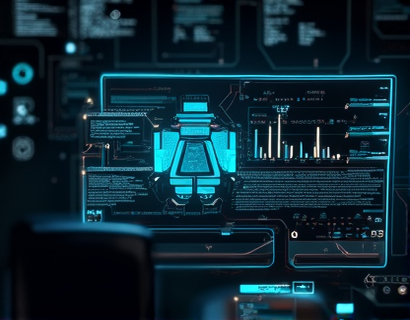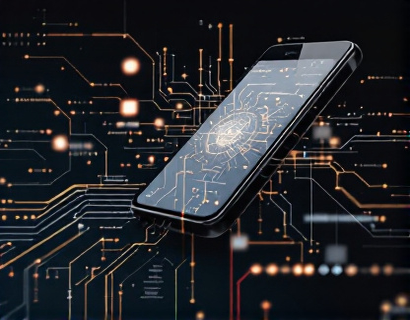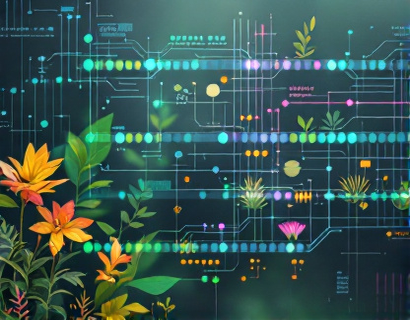AI-Powered Eye Health Chatbot: A Safe and Educational Resource for Ophthalmology Insights for All Ages
In the digital age, accessing reliable and educational resources for eye health has become increasingly important for people of all ages. An advanced AI chatbot has emerged as a pioneering tool, offering specialized insights into ophthalmology and eye care. This chatbot is designed to provide a safe and educational experience, ensuring that users, regardless of their age or background, can trust the information they receive. The platform focuses on delivering accurate content verification and a user-friendly interface, making it an invaluable resource for learning and exploration in the field of eye health.
Ensuring Content Accuracy and Safety
The primary concern when it comes to health information, especially for sensitive topics like eye health, is the accuracy and reliability of the content. The AI chatbot addresses this by integrating a robust content verification system. All information provided is cross-referenced with reputable medical databases, peer-reviewed journals, and direct inputs from certified ophthalmologists. This multi-layered verification process ensures that users receive the most up-to-date and scientifically accurate information possible.
For children and students, who are particularly vulnerable to misinformation, the chatbot offers an additional layer of safety. The content is specifically curated to be age-appropriate and free from complex medical jargon that might confuse young minds. The chatbot uses simple, clear language to explain concepts, making eye health education accessible and engaging for its younger audience. This approach not only educates but also empowers children and students to take proactive steps in maintaining their eye health.
User-Friendly Interface for Reliable Learning
The chatbot's interface is designed with user experience in mind. It is intuitive and easy to navigate, allowing users to quickly find the information they need. The layout is clean and uncluttered, with clear headings and concise paragraphs. This design ensures that users, whether they are seasoned professionals or curious beginners, can easily engage with the content without feeling overwhelmed.
One of the key features of the chatbot is its conversational interface. Users can ask questions in natural language, and the chatbot responds with relevant and detailed answers. This interactive approach makes learning about eye health feel more like a conversation with an expert, rather than reading through dry textbooks. The chatbot's ability to understand and respond to a wide range of queries makes it an invaluable tool for anyone seeking to expand their knowledge in ophthalmology.
Specialized Information for Ophthalmologist Services
For those looking to delve deeper into the services offered by ophthalmologists, the chatbot provides comprehensive insights. It covers a wide range of topics, from common eye conditions and their treatments to advanced surgical procedures and the latest research in eye care. Users can ask specific questions about procedures such as LASIK, cataract surgery, and glaucoma treatment, and receive detailed explanations of what these procedures involve, their benefits, and potential risks.
The chatbot also offers information on the qualifications and expertise of ophthalmologists. Users can inquire about the educational background, specializations, and experience of different practitioners. This transparency helps users make informed decisions when choosing an ophthalmologist, ensuring they receive care from a qualified and trustworthy professional.
Industry Knowledge and Trends
Beyond individual patient care, the chatbot provides valuable insights into the broader eye care industry. Users can stay updated on the latest trends, technological advancements, and research developments in ophthalmology. This includes information on new diagnostic tools, innovative treatment methods, and ongoing clinical trials. By keeping users informed about industry trends, the chatbot helps them understand the evolving landscape of eye care and the potential future of ophthalmology.
For students and professionals in the field, the chatbot serves as a continuous learning resource. It can provide summaries of recent publications, highlight key findings from major eye care conferences, and offer recommendations for further reading. This continuous flow of information ensures that users remain at the forefront of their field, equipped with the knowledge needed to provide the best possible care.
Support for Children and Students
Recognizing the unique needs of children and students, the chatbot includes specialized content tailored to their age groups. For younger children, the chatbot uses engaging and interactive content, such as quizzes and games, to teach basic eye health concepts. These activities are designed to be both educational and fun, encouraging children to learn about the importance of eye care from an early age.
For students, the chatbot offers more in-depth resources, including study guides, summaries of key concepts, and links to educational videos. These resources can complement their school curriculum and provide additional support for subjects related to biology, health, and science. The chatbot also addresses common concerns and questions that students might have about their eye health, such as how to protect their eyes from screens, the importance of regular eye exams, and tips for maintaining good vision during study sessions.
Building Trust Through Transparency
Trust is paramount when it comes to health information, and the chatbot prioritizes building this trust through transparency. Users are informed about the sources of the information provided, including the databases and journals that serve as references. The chatbot also clearly indicates when a response is based on general knowledge or when it is specific to a particular case or individual. This transparency helps users understand the context of the information and makes them more likely to trust the chatbot's recommendations.
Additionally, the chatbot provides contact information for users who need to consult with a human expert. In cases where the chatbot cannot provide a definitive answer or when more detailed advice is required, users can be directed to schedule an appointment with an ophthalmologist. This ensures that users have access to professional guidance when needed, further enhancing the reliability of the chatbot as a resource.
Promoting Preventive Eye Care
One of the core missions of the chatbot is to promote preventive eye care. It educates users on the importance of regular eye exams, especially for those with a family history of eye conditions or who spend long hours in front of screens. The chatbot provides guidelines on how often different age groups should have their eyes checked and what signs to look out for that might indicate a problem.
For children and students, the chatbot emphasizes the importance of eye health in academic performance and overall well-being. It offers tips on maintaining good vision, such as taking regular breaks from screens, maintaining proper lighting, and eating a balanced diet rich in eye-healthy nutrients. By instilling these habits early on, the chatbot helps create a foundation for lifelong eye health.
Community and Support
The chatbot also serves as a community hub for individuals interested in eye health. Users can join forums and discussion groups within the platform to share experiences, ask questions, and support one another. This community aspect fosters a sense of belonging and provides a space for users to connect with others who share similar concerns or interests.
For those dealing with specific eye conditions, the chatbot can connect them with support groups and resources tailored to their needs. This support network can be invaluable for individuals navigating the challenges of living with an eye condition, offering emotional support and practical advice.
Conclusion
The AI-powered eye health chatbot represents a significant advancement in providing accessible and reliable information about ophthalmology and eye care. By ensuring content accuracy, offering a user-friendly interface, and catering to the needs of diverse user groups, including children and students, the chatbot fills a critical gap in health education. It empowers users to take control of their eye health, make informed decisions, and stay informed about the latest developments in the field. As technology continues to evolve, the chatbot will likely become an even more integral part of eye care, helping to promote healthy vision for all.











































